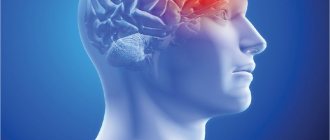Risk factors
The main risk group is patients suffering from mental illnesses. People with schizophrenia may develop depression, which can lead to suicidal thoughts. Moreover, schizophrenics often choose atypical methods of suicide. Borderline personality disorder, which is characterized by emotional immaturity, decreased control and increased impulsivity, may also have suicidal tendencies. Patients with this disorder are characterized by an inadequate reaction to stress; the aggression they experience at the moment of frustration, in the absence of another way out, can be directed at themselves.
In general, aggressive and hot-tempered behavior can be classified as signs of suicidal behavior, especially if changes in character occurred in a short period of time. There are often cases when spouses or lovers commit murder-suicide, that is, they take the life of their partner, and then themselves. Social and personal factors also influence suicidality. Men over 65 years of age are at risk, in particular those who have attempted suicide in the past. The most productive in their attempts are the “planners”, i.e. people drawing up a detailed action plan, which includes purchasing a means of suicide, completing all current affairs, and putting personal belongings in order. Such people may not show other outward signs of the disorder because their rational planning helps them hide their intentions from others.
Dates play an important role, especially for people suffering from mental disorders. They can tie their departure from life to personally significant dates. Having a suicidal person in the family, especially a direct ancestor, also puts a person at risk.
The ROSA Clinic has all the necessary conditions to help with suicidal behavior:
- A staff of experienced psychiatrists, psychotherapists and psychologists, neurologists, rehabilitation specialists,
- Own comfortable 24-hour sanatorium-type hospital,
- Possibility of examination and treatment of mental illnesses that caused a suicide attempt,
- Works around the clock,
- It is possible for a doctor to visit your home,
- For the period of treatment, if necessary, a certificate of incapacity for work (sick leave) is issued,
- Treatment and support is provided anonymously.
If you feel that everything is going too far and threatens suicide, call us urgently or leave a request, we will help.
What to do if you have suicidal thoughts
If you are faced with the fact that a person close to you is planning to commit suicide, he either directly talks about this or any indirect evidence suggests this, you should immediately consult a doctor.
If you manage to persuade him, then go together to see a psychiatrist without wasting time. If he refuses, withdraws, shows aggression, or is already committing suicidal actions, urgently invite loved ones to hold him and call an ambulance.
Remember, a suicide attempt is a direct indication for hospitalization. Most of those who decide to commit suicide, during a conversation, themselves consent to treatment.
According to statistics, approximately a third of suicides will refuse therapy, having the desire to complete suicide; such persons will require involuntary hospitalization in a clinic. For involuntary hospitalization, you need to call a psychiatric ambulance. A psychiatrist has the right, on the basis of the “Law of the Russian Federation on Psychiatric Care...” to take the patient to the hospital even without the desire of the sick person.
Reasons for the development of suicidal tendencies
People whose psyche is not strong enough to cope with difficult experiences, such as the loss of a loved one, may be suicidal. Also, the reason may be very low self-esteem, coupled with constant ridicule or bad attitude of relatives and friends. Other causes include feelings of hopelessness, nihilistic delusions, excessive feelings of guilt, and hypochondriacal delusions such as fear of cancer or suspicion of a pre-existing serious illness even if there is none. The actual occurrence of a severe or chronic illness can also have a negative impact on a person's psyche, causing thoughts of suicide.
Some medications can affect a person’s state of thoughts, namely their withdrawal. When a drug such as paroxetine (and other drugs of a similar spectrum of antidepressants) is discontinued, a person’s depressive state intensifies, as well as the feeling of anxiety. All this can lead to thoughts of suicide, especially if no other antidepressants were prescribed after discontinuation of the drug.
It is important to understand the importance of identifying such factors before it is too late.
Medication and therapy can have a huge positive effect and help a person overcome their condition, thereby preventing the needless loss of life. Every patient suffering from depression should be interviewed about suicidal tendencies and thoughts. A full conversation, history taking, and a calm and constructive conversation with the patient can help find ways to rid the person of the desire to harm himself. In contact with
Journal of Practical Psychology and Psychoanalysis
Comment: Article from the collection “Anthology of Suicidology: Main articles by foreign scientists. 1912–1993. Moltsberger D., Goldblatt M. (Compiled), Cogito Center, 2021.
annotation
The author substantiates psychalgia, that is, unbearable mental pain, as the main variable associated with suicide; identifies the main motivational components that lead to suicidal outcome; compares symptoms of depression and characteristics of suicide.
Key words: suicide, psychalgia, pain, needs, depression.
Edwin Shneidman created a new word psychalgia (psych + Greek algos - pain) to denote mental pain, which, intensifying, makes a person’s life unbearable and pushes him to suicide. He emphasizes the psychological nature of this pain, reminding readers that regardless of the biological basis of depression, suicide is linked to a person's personality. The essence of suicide is not determined by the neurochemical processes that form the physical matrix and determine its adequate functioning.
The tradition among doctors in psychiatric hospitals and clinics to consider suicide as a consequence of depression, schizophrenia or alcoholism (the three diagnostic categories in which its likelihood is highest) distracts attention from the main psychological phenomenon - mental suffering. When the doctor's attention is focused on the diagnosis and not on the patient, it is easy to overlook the unbearable subjective feelings that have gripped him.
Drawing attention to the importance of psychalgia as the main cause of suicide, Shneidman indirectly confirms modern data indicating that panic experiences provoke suicide attempts more often than depression itself. This is consistent with the long-established view that patients with agitated depression whose distress is excessive are at serious risk of suicide.
Now, approaching the end of my career in suicidology, it seems to me that I can express my main idea in literally three words: suicide is caused by psychalgia. Psychalgia means suffering, torment, irritation, pain, mental pain in the head, soul, consciousness. This pain is psychological in nature, it arises from excessive shame, guilt or humiliation, from loneliness or fear, from the fear of aging or a difficult death, or something else. When she appears, her reality is unmistakable. Suicide occurs when psychalgia is assessed by a person as unbearable mental pain. This means that suicide also depends on different individual thresholds of tolerance to mental pain (Shneidman, 1985, 1992)*.
All previous attempts to establish the dependence of suicide on simple non-psychological variables - gender, age, race, socio-economic level, medical history (even the most horrific), psychiatric categories (including depression), etc. - were (and remain) doomed to failure because they ignore the main variable associated with suicide - unbearable mental pain, that is, psychalgia.
By its nature, mental pain is associated with psychological needs. Their satisfaction is the most general goal of all human activity. Suicide relates to psychological needs in the sense that in a specific way it stops the stream of consciousness that causes unbearable mental pain. And this pain, psychalgia, is caused by blockade, disruption or frustration of certain psychological needs, the satisfaction of which a person considers (at a certain moment and under specific circumstances) absolutely necessary for the continuation of life.
Suicide performs the function not of adaptation, but of regulation, since it is aimed at reducing pain associated with blocked needs. Henry Murray's monumental work, A Study of Personality (Murray, 1938), provides a comprehensive list of psychological needs and their definitions: self-affirmation, achievement, affiliation, aggression, autonomy, opposition, self-defense, respect, dominance, demonstrativeness, avoidance of danger, avoidance of shame, integrity , care, order, play, rejection, sensitivity, support and understanding.
There is an inextricable relationship between suicide and happiness—or rather, the lack thereof. Real happiness—in contrast to nineteenth- and twentieth-century materialistic definitions that narrowly identified it with the mere absence of pain and the presence of earthly goods—has a special magical quality (Spender, 1988). Of course, there is worldly happiness from comfort, avoidance of pain and psychological anesthesia. But true, magical happiness has relatively little in common with everyday comfort; it represents rather the ecstasy and abundance of consumption that can only be experienced in the tender years of childhood. When I say that suicide has to do with happiness, I am talking about people of any age - not about their lack of bourgeois happiness, but about the loss of the magical joys of childhood.
The main task of modern suicidology is the operationalization (and measurement) of the key dimension of psychalgia. When starting to solve it, you can ask a simple question: “How much pain does it hurt?” (Kropf, 1990).
One way to clearly understand any person is to rank (or Q-sort) 20 needs according to their degree of predominance, that is, to define or describe his personality in terms of the subjective weights of each of these needs. Ranking can be done by assigning a certain number of points to each individual's needs so that the sum of all needs is equal to 100. This method allows you to evaluate different people (or one person at different times) using the constant sum method. This task is simple and takes only a few minutes. (Try the technique by rating yourself first; then rank a well-known public figure, ask colleagues to rank her, rank your patients after each psychotherapy session, rank suicidal and non-suicidal patients.)
In connection with suicide in each individual, two sets of dispositions or sets of relative weights of the mentioned 20 psychological needs can be distinguished: (a) psychological needs with which the individual lives and which determine his personality in everyday intrapsychic and interpersonal functioning, that is, modal needs; and (b) several psychological needs, the frustration of which the individual is unable to bear, for which he is ready to die, that is, vital needs. For a particular person, these two types of needs are psychologically consistent with each other. Vital needs are actualized when a person is subjected to threat or coercion. This register of needs can be learned by asking a person questions about his reactions to failure, loss, rejection or humiliation - "dark" moments - in his past life.
Through intensive psychological autopsy (Shneidman, 1977), it is usually possible to identify (or label) each suicide in terms of two or three predominant needs, the frustration of which played a leading role in the death. (Given all 20 needs, we have the potential to classify several hundred possible “types” of suicide.)
Based on the above, preventing suicide (in a person with a high risk of mortality) comes down, first of all, to identifying and partially weakening those frustrating psychological needs that push this person to commit suicide. The rule here is simple: calm the mental pain.
I believe that the path to suicide can be divided into the following seven components:
- the vicissitudes of life; those stresses, failures, rejection, somatic, social and psychological problems that constantly accompany human life;
- different approaches to understanding human behavior. It is clear that suicidal behavior (like any other behavior) is multidimensional. In practice, this provision means that its correct description must be multidisciplinary. The field of knowledge called suicidology covers biochemistry (with genetics), sociology, demographic epidemiology, psychology, psychiatry, linguistics, etc. The reader should understand that this article is limited to the psychological approach to suicide and does not detract from the importance of other legitimate approaches;
- The vicissitudes of life, permeating the human psyche, are perceived (or interpreted) as ecstatic, joyful, neutral, insignificant or painful. If, as a result of certain situations, excessive mental pain occurs, then a necessary condition for committing suicide appears. “It hurts too much”;
- the perception of pain as intolerable, intolerable and unacceptable is another necessary condition for suicide in addition to psychalgia. “I will not put up with this pain”;
- the thought (or insight) that by extinguishing consciousness one can get rid of unbearable mental pain creates another necessary condition. It can be expressed as follows: death is preferable to such a life, death allows one to escape or provides a way out of the situation. “I can commit suicide”;
- lowering the threshold of endurance or resistance to debilitating mental pain is the last necessary condition for suicide. A priori, people with approximately equal intensity of psychalgia can come to completely different external outcomes depending on their thresholds for tolerating mental pain (in life, pain is omnipresent and inevitable, and suffering is selective);
- suicidal outcome: “It hurts me too much to continue living.”
At this point, a vigilant reader may stubbornly ask the question: what about depression? Everyone knows that it is a serious psychopathological syndrome, well known and relatively treatable. However, depression and suicide are completely different things. First of all, they differ greatly in mortality rates. With depression, a person can live a long, albeit unhappy life, which cannot be said about an acute suicidal state. Theoretically, no one has ever died from depression, it is not an illness that can be listed as a cause on a death certificate, but many, too many have died by suicide. A huge number of people suffer from mild and severe forms of depression. Depression appears to have physiological, biochemical, and possibly genetic components. Therefore, it is advisable to use appropriate medications in its treatment. It represents, so to speak, a biological storm in the brain. Suicide is a phenomenological event, an ongoing emotional disturbance. Suicidal behavior can be corrected by psychotherapeutic methods and by changing external circumstances. Suicide is not a mental disorder. It represents a nervous dysfunction, not a mental illness. Persons who commit suicide are in a state of mental confusion in 100% of cases, but they do not necessarily have to suffer from clinical depression (schizophrenia, alcoholism, drug addiction or other mental disorder). A suicidal crisis is best treated based on its core symptom—deadly (albeit transient and treatable) psychalgia (see Table 1).
Table 1. Symptoms of depression and characteristics of suicide
| Depression | Suicide |
| 1. Melancholy | 1. Intense psychalgia |
| 2. Apathy | 2. Inability to endure mental pain (lowering the threshold of tolerance to suffering) |
| 3. Loss of appetite or increased appetite | 3. View of the end of life as salvation (death as a way out or solution) |
| 4. Insomnia or increased sleep duration | 4. Possibilities other than death are not taken into account (narrowing of perception) |
| 5. Motor restlessness (agitation) or retardation | 5. Symptoms of depression may or may not be present (suicide as a mental condition) |
| 6. Fatigue and loss of strength | |
| 7. Feelings of worthlessness or great guilt | |
| 8. Inability to concentrate or indecisiveness | |
| 9. Thoughts about death or suicide |
Depression itself is never a cause of suicide; rather, it is the result of intense mental pain combined with dysphoria, a narrowing of the field of perception and the thought of preferring death to life. The clinical symptoms of depression are debilitating but not inherently fatal. On the other hand, intense psychalgia itself can be life-threatening. The search for correlations between suicide and the categories given in the DSM classification of mental disorders is incorrect and is not based on real processes occurring in the psyche. Depression is certainly treatable, but to suggest that it always underlies suicide is a logical fallacy, conceptual confusion, or professional naivety. One way or another, the time has come to make adjustments to these ideas.
I would like to offer a brief summary of my current views on suicide, which have been formed over forty years of work in the field of suicidology.
1. Suicidology as a science about the phenomenon of suicide among people and psychological autopsy (the study of a specific case of suicide) are identical in their goal - to solve the mystery of human self-destruction.
2. The most obvious fact recognized in suicidology is the multidimensionality, versatility and multidisciplinary nature of suicidal events, which contain biological, social, psychological (interpersonal and intrapsychic), epidemiological and philosophical elements.
3. Among the psychological factors, the key element in every case of suicide is psychological pain - psychalgia. Any affective states (rage, hostility, melancholy, shame, guilt, insensibility, hopelessness, etc.) are related to suicide only as reasons that cause psychalgia. For example, if guilt, melancholy, painful remorse or uncontrollable unconscious anger give rise to suicidal feelings in a person, it is only because they cause him pain. If there is no psychalgia, there is no suicide.
4. People have different pain tolerance or sensitivity thresholds; thus, a person's decision not to endure pain due to pain intolerance is directly related to suicide.
5. In each case, psychalgia is generated and nourished by frustrated psychological needs. They are described in detail by Henry Murray (1938, pp. 142–242).
6. There are modal psychological needs with which a person lives (they determine personality), and vital psychological needs, the frustration of which cannot be tolerated (they determine suicide). For each person, these two types of needs are psychologically consistent with each other, although they do not necessarily coincide.
7. Help (or psychotherapy) for suicidal conditions consists of working with vital needs and reducing their frustration. It is useful for the therapist to keep in mind a list of psychological needs so that psychotherapeutic assistance takes into account the characteristics of each individual patient. Often, even a slight reduction in the level of frustration of his needs can change the balance of life enough to save his life.
Annotation
The author justifies unbearable mental pain as the main variable associated with suicide, identifies the main motivational components that lead to a suicidal outcome, compares the symptoms of depression and the characteristics of suicide.
Keywords: Suicide, pain, needs, depression.
A fundamental description of the phenomenon of psychalgia is contained in the book: Shneidman E. The Soul of a Suicide. M.: Smysl, 2001.










